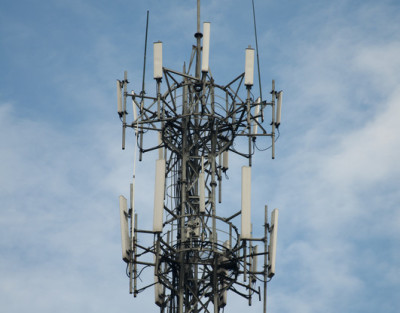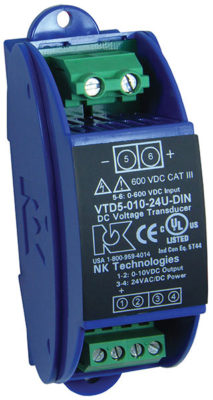 Photovoltaic energy production along with other industrial applications has brought Direct Current (DC) power back to common use. With the upsurge in DC use comes the need to measure and control the power in many industries.
Photovoltaic energy production along with other industrial applications has brought Direct Current (DC) power back to common use. With the upsurge in DC use comes the need to measure and control the power in many industries.
Photovoltaic Power Production Many solar panels use a voltage regulator to keep the rise and fall of the voltage at a minimum, but the nominal 12 volts produced by each panel is very often connected in series to produce higher voltages, with 600, 700 and 1000 volts DC quite common. If a panel fails, the voltage will drop. Using a voltage transducer to follow and monitor the panel string output helps to keep the system running at maximum efficiency.
Telecommunications: The importance of cell service in the 21st century cannot be underestimated. The technology is not only used for personal phones, but SCADA and other data acquisition systems are primarily reliant on cell reception. Most telecommunication sites use battery systems to power the transmission towers. Measuring the DC voltage of the battery racks provides information to make intelligent decisions regarding maintenance.
 Steel Manufacturing: Direct Current power is also used extensively in industry; very large loads are lifted, shifted, and transported with motors driven with DC power. Slabs of white hot steel are moved along conveyor lines with multiple small DC motors, and confirmation that there is voltage present to operate the line even before the motor is turning provides the assurance that the system is functional. If a fuse opens or is missing, the voltage will also be missing. If one motor that helps push hot ingots along stops, the ingots will be scored with a groove, ruining the whole piece. Measuring the voltage and the current provides the greatest amount of information and lets the operator know that the system is ready to operate and that it is working at an optimal rate.
Steel Manufacturing: Direct Current power is also used extensively in industry; very large loads are lifted, shifted, and transported with motors driven with DC power. Slabs of white hot steel are moved along conveyor lines with multiple small DC motors, and confirmation that there is voltage present to operate the line even before the motor is turning provides the assurance that the system is functional. If a fuse opens or is missing, the voltage will also be missing. If one motor that helps push hot ingots along stops, the ingots will be scored with a groove, ruining the whole piece. Measuring the voltage and the current provides the greatest amount of information and lets the operator know that the system is ready to operate and that it is working at an optimal rate.
In addition to the applications above, a voltage transducer can also be used to monitor the shunt wound field of a DC motor to insure that voltage is being applied to the shunt field. The speed of this type of motor is controlled by the voltage supplied to the field. If the voltage is removed while the armature is energized, the motor speed will increase until failure occurs or some voltage is applied to the field windings.
 VTD Series, High-Performance DC Transducers
VTD Series, High-Performance DC Transducers
NK Technologies offers the VTD series of DC voltage transducers with ranges from 0–5 to 0–600 V. VTD transducers provide fully isolated outputs of 4–20 mA, 0–5 or 0–10 VDC, all proportional to the connected voltage with +/-1% of full scale.
The slim, compact case attaches easily to a DIN rail or can be screwed to a back panel.
These sensors are UL listed and CE compliant and are designed and manufactured at NK Technologies’ factory located in San Jose, California.

 VTD Series, High-Performance DC Transducers
VTD Series, High-Performance DC Transducers